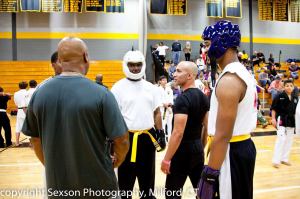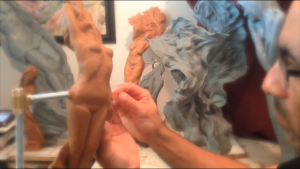The Discipline in The Discipline
Discipline is an interesting word. It describes a specialization within a field of practice. Think of physicians. Each of them specializes in specific conditions and treatments. Yes, they have to go through understanding pathophysiology or how diseases affect the natural functions of the human body. However, specializations allow them to understand specific functions related to specific parts of the body.
 Discipline also describes training, activity, or exercise to develop and improve a skill. Think about martial artists, soldiers, and athletes. Think about all the time they spend, not fighting, not in war, or competing, but training hard to become better and master their abilities. It is sacrificial and hard work. Despite of the time and skills that took them there, they need to continue working to maintain what they know and can do. They also add to their knowledge as they exercise.
Discipline also describes training, activity, or exercise to develop and improve a skill. Think about martial artists, soldiers, and athletes. Think about all the time they spend, not fighting, not in war, or competing, but training hard to become better and master their abilities. It is sacrificial and hard work. Despite of the time and skills that took them there, they need to continue working to maintain what they know and can do. They also add to their knowledge as they exercise.
Then you have the discipline in the discipline. In every field of practice and every specialization within a field people have to continue working, practicing, sacrificing time, exercising, studying, and giving their all to maintain and improve the skills and abilities. When they thought they reached their degree or maximum capacity of their skills it is just the beginning. There is always something new to learn, there is always something that could be improved.
 Art is no different. There are artists. There are artists who specialize in specific areas of expression. Yes, we learn what we can in a generalize way, and we may master a few disciplines within the arts, but we can’t forget that the discipline in the discipline makes us better in our specialization. This discipline entails from revisiting basic skills to complicated techniques. Although, “complicated” techniques is just the sum of basic skills put together (but that is a subject that could be explored in the near future).
Art is no different. There are artists. There are artists who specialize in specific areas of expression. Yes, we learn what we can in a generalize way, and we may master a few disciplines within the arts, but we can’t forget that the discipline in the discipline makes us better in our specialization. This discipline entails from revisiting basic skills to complicated techniques. Although, “complicated” techniques is just the sum of basic skills put together (but that is a subject that could be explored in the near future).
As aforementioned, discipline requires to practice certain activities. How does this look like for an artist? What exercises help artists get better at what they do? I would like to mention a few from my personal experience. Feel free to share some of your own. These are in no specific order and they don’t happen altogether in one day.
- Prayer, meditation, and Bible reading
- Reading books and watching documentaries: art, history, archeology, anthropology, and psychology
- Studio time (A lot can happen there. Read also Studio Time: Work on Something or Nothing)
- Drawing and doodling (just for the fun of it)
- Talking about art and ideas for future work
- Listening to people: sometimes their stories inspire me (read also Inspired by Life)
- Revisiting previous work. This helps me see where I need to practice more.
- Teaching. By teaching others basic skills I remember to approach art with fresh eyes
- Studying the figure: yoga, dancers, acrobats…
- Disconnecting from art: It might sound awkward but sometimes I have to disconnect to reconnect.
I could go on and on, but it would be great to hear about your practices.

The Science in the Art
It has been a while since last time I wrote in my blog. It has been a great journey so far this semester teaching Inquiry at Quinnipiac University, the academic advising experiment, the sculpting and painting parties, the workshops and talks on Business Needs Assessment with an Inquiry Approach, the show that just ended at Spectrum Gallery, the sculpting demo I had there back in March, the sculpting workshop at Columbus School through ARTE Inc., the computer classes at the now Literacy Volunteers of Southern Connecticut, and a new partnership unfolding that gets me closer to understand my mission and the reason I do what I do… Well, that was a long sentence… Things are wrapping up as we are about a month away to finish the semester. The summer (if we get one this year in New England) is already promising good things. I think that brings us up-to-date in everything that is happening.
The Science in the Art
My students were working in groups to get feedback from each other as they prepared for their oral presentations. This is one way research in peer tutoring learning environments supports practice and practice supports research. In the process, one student was trying to find a connection between health sciences, specifically medicine, and art. To serve as an example that helped make the connection clear and concrete we have the Frank H. Netter M.D. School of Medicine at Quinnipiac University. Frank H. Netter M.D. was a surgeon and world’s most prolific medical illustrator. He helped medicine understand the human body with his illustrations. Interestingly, when people study medicine they call it medical arts. Not finding the connection yet? Let me help you understand. All the knowledge in science, or in any field, is incomplete without the capacity to think creatively to solve specific issues or to accurately come up with a diagnosis.